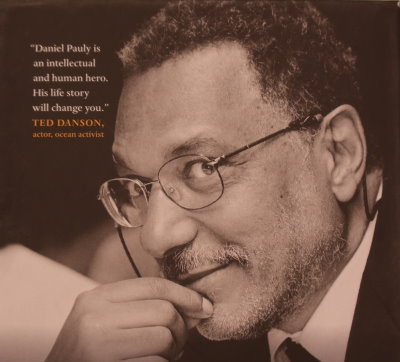 ‘The Ocean’s Whistleblower. The Remarkable Life and Work of Daniel Pauly' by David Grémillet
‘The Ocean’s Whistleblower. The Remarkable Life and Work of Daniel Pauly' by David Grémillet
translated from French to English by Georgia Lyon Froman. Vancouver / Berkely, David Suzuki Institute and Greystone Books, 349 p. ISBN 978-1-77164-754-0
This book review was first published in March 2022 in the SAMUDRA Report 87, reproduced here with kind permission of ICSF.
Daniel Pauly and I met on the second day of my marine studies in Kiel, back in late 1969 and we’ve been friends ever since. Little did I know then about his novellistic life up to that point, namely that he had been ‘kidnapped’ by a Swiss family from his single working mother in Paris after WWII and later kept by them as a domestic. Some of the details I only discovered when reading the book, including how he had come to Germany at the age of 17 to earn a living as a worker and managed to weather the hardship of doing four years of evening school until he achieved the diploma opening the doors to his extraordinary academic career. He had had an emotional discovery of his mother, her husband and his seven siblings (four brothers, three sisters) in France at the age of 19 and in the middle of his high school studies when the French army discovered his whereabouts in Germany and wanted to draft him, but then decided he was no gain for the army. Two more years of work and study followed. By the end of 1969 he had just come back from his first trip to the US in search of his biological father, a black American soldier. During his roamings in the US, he had discovered what it meant to be black, something he had not experienced in the same way during his upbringing in Europe.
His friendliness and ‘big mouth’ impressed me very much during my own first venturing far from home and trying to find my feet in the new experience of university studies in Kiel, a city with a past as a naval base with ship yards and brick buildings characteristic of Wilhelmenian times. Later on not everybody would perceive Daniel as particularly friendly as he did not shy away from controversy. But I guess most people knowing him in those days will agree on the ‘big mouth’ and his penchant for ‘big ideas’. It was the time of student protests and we got our share in Kiel as well.
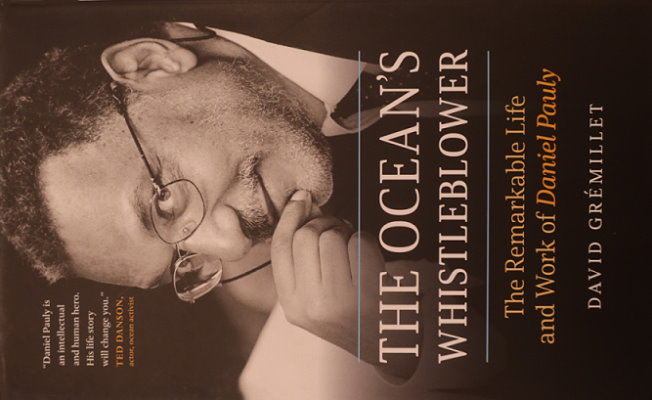 Daniel stood out from the rest of us not only because he was older, but also because he was very articulate, had a lot more readings under his belt and did not hide that he does not suffer fools gladly. He also would provide the glue to an entire group of socially minded marine biologists by always going the extra-mile to connect, support, stimulate. Readers will find the echo of this attitude in David Grémillet’s insightful narration of the later stages in his life and how he steadfastly supported students and peers, particularly from the ‘Global South’. The book is indeed more than the mere biography of Daniel Pauly, certainly the towering character at the centre. But Grémillet weaves snapshots of the lives of an entire generation of marine scientists into the story based on his wide-ranging research and interviews conducted for his rendition.
Daniel stood out from the rest of us not only because he was older, but also because he was very articulate, had a lot more readings under his belt and did not hide that he does not suffer fools gladly. He also would provide the glue to an entire group of socially minded marine biologists by always going the extra-mile to connect, support, stimulate. Readers will find the echo of this attitude in David Grémillet’s insightful narration of the later stages in his life and how he steadfastly supported students and peers, particularly from the ‘Global South’. The book is indeed more than the mere biography of Daniel Pauly, certainly the towering character at the centre. But Grémillet weaves snapshots of the lives of an entire generation of marine scientists into the story based on his wide-ranging research and interviews conducted for his rendition.
The lion share of the narration is devoted to Daniel’s extraordinarily productive scientific endeavours, profoundly inspired by Darwin and his quest to uncover the natural laws and mechanisms that produced the geological formations, plants and animals he observed. Darwin’s characteristic willingness to learn from all the people he encountered during his studies and on the voyage of the Beagle enabled this most superb natural scientist ‘ultimately, to formulate a theory that encompasses all of humanity, and embedded us within the same nature.’1
Sent to Indonesia in 1975 under contract with the German Agency for Technical Cooperation (GTZ at the time) to develop a trawl fishery, Pauly discovered the biodiversity in the tropics. During a weeks-long exploratory survey on the Mutiara 4 research trawler, a typical one-hour haul ‘would yield two hundred kilograms of fish, and there were 150 different species, of which only 80 were known’. This convinced him that the assessment methods developed in the North for targeting one or two dominant species simply wouldn’t work. The data required were the identity of the fish, their age, weight at age, abundance and an estimate of natural mortality. Natural mortality is not provoked by fishing, but by predation and other natural processes. Or, to put it differently, managers required detailed information on growth, mortality and the recruitment schedules of fish into the fishery, that is the time and size when young fish become vulnerable to the fishery. Age was typically determined by reading annual rings in broken-up otoliths examined under the microscope, an ‘extremely meticulous technique’. Otoliths are calcium structures in the inner ear of vertebrates, including you and me, providing a sense of balance. In the tropics, the seasonality is less pronounced than in cold and temperate waters, so such a time consuming methods for age determination was utterly impossible.
How to find an alternative? In his energetic search for an answer, Pauly developed what became a systematic approach during all his academic life through the search of the scientific and grey literature up and down the accessible libraries for as much information as possible. He was on the hunt for the basic principles of growth and mortality that would apply to ALL fish spurred by his discovery of Hungarian theoretician von Bertalanffy’s generic growth formula and Beverton and Holt’s influential work2 on the dynamics of exploited fish populations built around von Bertalanffy. In the process, he collected any publication containing fish size at age data and estimates of natural mortality (M) within reach. In the end, in those times without internet and portable computers he developed a card collection, one per fish species, gathering information about 515 species from 978 distinct populations, including 100 estimates of M. This is why he resented the much used sentence ‘nothing is known about xyz, therefore we need an expensive survey’. Particularly from then on he also preferred an extensive literature research to lengthy field work.
Analysing the data with the help of a colleague in the physical oceanography department, he saw the known pattern pattern of fish growing faster in tropical temperatures and found a strong correlation between the natural mortality M, their growth rate, maximum size and the average temperature in their distribution range. The publication of his equation and the complete data set available for 175 fish species made a big splash3. It set the precedence for all his following work to go into great length in offering open access to the theory and data as a key enabling mechanism for others to move the entire field forward, especially in the Global South where fewer scientists were employed and library facilities much more limited.
Shortly before that Daniel defended his PhD thesis4 which established the fundamental relationship of gill size and temperature as a limiting factor for fish growth, thus generalising von Bertalanffy’s growth formula. In hindsight, with a lot of additional evidence analysed and published since, he laid already the foundation for understanding why fish spawn and why their growth slows down and a host of other phenomena. The gills for gas exchange are a surface and fish and other water-breathing organisms need to expend a lot of energy in the much denser water environment than air-breathing organisms. The bigger the surface of the gills in relation to the body size, the better the fish can grow. However, the increase in body mass is a volume that eventually gets limited by the surface of the gills as a surface, hence the about 2/3 raising factor in the growth curve. Moreover, warmer water contains less dissolved oxygen, so that while the metabolism is faster in such waters for animals which don’t control their own temperature like mammals (or tuna to some extent), it also means they remain smaller.
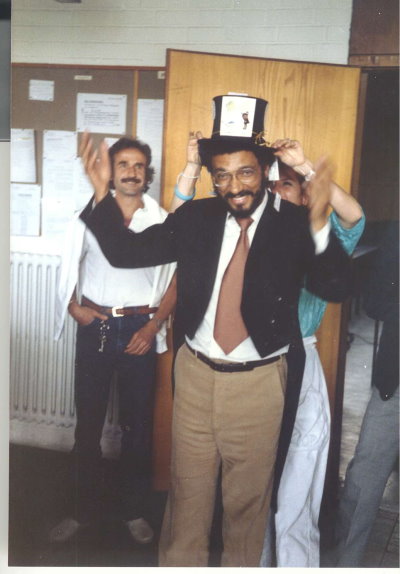 At the time, this scientific break-through went largely unnoticed. But in recent times he is focusing again on these fundamentals that prove their worth not only with ‘ordinary’ fish, but also with all kinds of odd species which seem at first glance to fall off the curve. A beautiful case in point is the Ocean sunfish (Mola mola) bobbing around in all warm and temperate seas which can only achieve its remarkable maximum weight in excess of two tons because most of its body is made up of an inert, jelly-like substance, which, unlike muscle, does not need regular oxygen supply. Consistent with the small gill surface compared to its body size it is not capable of sustained fast swimming. Conversely, the giant manta (Mobula birostris), an endangered circumglobal species in warm and temperate waters on the IUCN Red List, can also reach considerable size. How does it manage? When you watch it from below you note that the gills take most of its underside and the flapping fins are thin and have a modest volume.
At the time, this scientific break-through went largely unnoticed. But in recent times he is focusing again on these fundamentals that prove their worth not only with ‘ordinary’ fish, but also with all kinds of odd species which seem at first glance to fall off the curve. A beautiful case in point is the Ocean sunfish (Mola mola) bobbing around in all warm and temperate seas which can only achieve its remarkable maximum weight in excess of two tons because most of its body is made up of an inert, jelly-like substance, which, unlike muscle, does not need regular oxygen supply. Consistent with the small gill surface compared to its body size it is not capable of sustained fast swimming. Conversely, the giant manta (Mobula birostris), an endangered circumglobal species in warm and temperate waters on the IUCN Red List, can also reach considerable size. How does it manage? When you watch it from below you note that the gills take most of its underside and the flapping fins are thin and have a modest volume.
These few examples are part of the broader evidence building up more recently providing evidence that indeed already with his PhD thesis, some four decades ago, Daniel was onto the fundamental mechanism governing the growth of water breathing organisms. These findings are true explanations applicable to all fish and more generally for all water breathing organisms whether they have gills or not. They go well beyond the descriptions of individual cases that can not be generalised. It is these explanations that can and should be used for fisheries management and the inform recovery and conservation efforts. That is were the science shows its power to help understand not only the specific case one may have studied, but be able to formulate hypotheses and expectations for many so far unstudied cases and other life cycle parameters.
In the chronological order of the book, David Grémillet then traces how Daniel’s next career step with the International Center for Living Resources Management (ICLARM) in the Philippines opened up a fantastic opportunity for combining ecological work with research into the social dimension of fisheries when he became the project’s scientific co-manager of the San Miguel Bay project. Based on the idea of two local student this multi-dimensional study of San Miguel Bay fisheries in the Bicol Region, some 200 kilometres south-east of Manila, has probably not been surpassed in detail by any in other regions of the globe. The evidence-based recommendations included, among others, advice to help diversify social and economic activities to make for more robust livelihoods within fisheries and beyond, particularly in a growing population. However, despite the rigour, the message was not taken to heart by those in charge of setting the rules and enforcing them.
It was also the time when Daniel revived, and modernised with his team, a method of fitting growth curves to chronological size-frequency distributions of fish first developed by a Danish marine biologist at the end of the 19th century, C.G. Johannes Petersen. The ELEFAN (Electronic Length Frequency Analysis) in its successive versions improved by Daniel’s Filipino assistant at the time in ICLARM, Maria Lourdes (Deng) Palomares, became a great hit, not only in tropical countries where age determination of fish with otoliths was problematic. She remained at Daniel’s side when he moved to Vancouver, eventually growing into the role of the scientific project manager of the Sea Around Us.
During the time at ICLARM Daniel forged a number of lasting friendships and collaborations with the likes of Jay Maclean from Australia and Rainer Froese from Germany. The former was a gifted word-smith editing countless scientific reports and writing prose for children and adults as well. The latter the ‘accomplice in crime’ for turning Daniel’s fish card collection into a database they developed together into the most comprehensive and impactful public information system of all fish species known to science, FishBase5. In the early 90s, the European Commission first financed an initial consolidation of the database as a sort of proof of principle that it could be done on the then up and coming personal computers. Once this was done and more content became available, the EC accepted the request of African, Caribbean and Pacific (ACP) countries for a major development and training programme to make modern fisheries analysis methods and published data available to their understaffed administrations and environmental NGOs. At the time, I was working myself in the Cooperation Department and was happy to facilitate the unanimous agreement of EU Member States representatives to this funding decision for capacity building in ACP countries.
Towards the end of the project the internet was making headway gradually replacing floppy discs, CDs and DVDs tediously produced and dispatched to hundreds of users in countries around the globe. The creation of a multi-agency FishBase Consortium laid the foundation for the continued development of FishBase beyond the initial project funding. A dedicated team of encoders in the Philippines is the backbone of data entry and still beavering away at extracting, standardising and inputting information on fish biology inspired and supervised by Daniel, Rainer and Deng: FishBase now covers 34,700 species, 324,200 common names in more than 300 languages, 61,000 pictures, and information extracted from 58,400 references. It enjoys the support of 2,440 collaborators around the globe, and is consulted by huge numbers of people during 1,000,000 visits/month. The rest is history.
Moving to the University of British Columbia (UBC) in Vancouver, Canada, in 1994, Daniel kept his ties to ICLARM and together with Villy Christensen, a Danish fisheries biologist hailing from a fishing family, developed a mass-balance ecosystem approach based on earlier efforts of a US colleague, Jeff Polovina. Ecopath, later joined by Ecosim and Ecospace pulls together many studies, often by specialists of one type of organism. The basic idea is that the biomasses and energy flows within an ecosystem have to balance out in nature. To put it very simply, say, you can not have a huge amount of top predators without sufficient primary production and prey species. Primary producers, marine algae, using the sun’s energy to build up organic matter through photosynthesis, account for about half the oxygen in the atmosphere. They are assigned level 1. The small crustaceans, like copepods and other tiny animals in the zooplankton feeding on the plants are level 2, fish like sardines, anchovies and herring feeding in turn on the phytoplankton and zooplankton are somewhere between level 2 and 3. A rough and tumble transfer rate from one trophic level to the next is 10%, while about 90% of their energy is needed for maintenance of their bodies and growth. That means, 1 million tons of primary producers would support about 100,000 tons of zooplankton, 10,000 tons of secondary consumers, but only 100 tons of level 4 top predators like some of the tunas, big cod or oceanic sharks. It is therefore not surprising that some of the biggest marine animals, like many marine mammals and the whale shark (Rhincodon typus), the biggest living fish, now assessed as endangered on the IUCN Red List, are feeding low in the food web by filtering plankton or eating other small invertebrates and small fish.
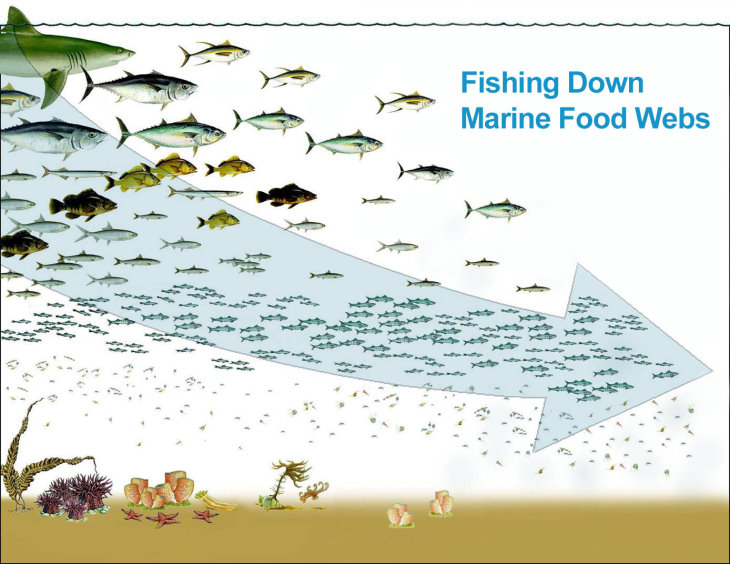
Here the readers witness through Grémillet’s rendering the nascent working hypothesis triggering yet another huge literature search to understand the different species within their ecosystem context and developing a broad classification of different types of such ecosystems. These can then be assessed for their efficiency of channelling the energy in the system to the most desirable species humans like to consume. Alternatively, heavy fishing may have disrupted the food web at the top and middle layers and directed more energy into jelly fish, bacteria and other non-resource species. In a landmark paper based on the analysis of global catches by country published by the Food and Agriculture Organization of the UN (FAO), Daniel called this effect ‘Fishing down the food web’. The emblematic picture developed by trusted artist Rachel (Aque) Atanacio in the FishBase team in the Philippines has been used over and over and appeared in several different incarnations to visualise the trend. The trend is stronger in those parts of the ocean that have been industrially fished for a long time like the North Atlantic. It is sometimes masked by fisheries moving on further south from badly overfished regions and also fishing deeper down. Thus, in the expansion phase of these fisheries using ever more powerful and more sophisticated gear and fish location equipment it could appear as if the index was moving up the food-web. But these effects were only short-lived and due to extending the range and reach of industrial fisheries now accessing all parts of the ocean, usually not the result of improved management of existing fishing grounds. But as described in the biography, to distinguish the driving forces required again a massive effort in hypothesis-driven data collection and analysis and did not advance without controversy.
These gradual changes in ecosystems are not easily discerned even by researchers and managers. Every generation of professionals tends to take the state of the environment at the beginning of their career as their reference point. This way, longer-term changes in their own and other places largely go unnoticed, a wide-spread phenomenon Daniel characterised as ‘shifting baseline syndrome’6, a concept that has been widely taken up. Shifting baseline syndrome is indeed the reason, why it can be problematic today to refer to sustainable fisheries as an objective, while we should collectively set our eyes on rebuilding and recovering marine ecosystems so as to restore at least the major part of their earlier size, composition and productivity.
The research in other branches of the food system, notably at the International Rice Research Institute (IRRI) in Los Baños, where ICLARM was hosted for a while, took a global perspective in the light of the challenges of feeding an increasing human population. That inspired Daniel to try something comparable for fisheries. The occasion arose when the Pew Charitable Trusts accepted his idea of building a global information system on the fisheries impact on the ocean and providing management advice. Based at the UBC Fisheries Centre in Vancouver, the starting point was again the global FAO statistics of nominal catches by country. The build-up of a core team around Dirk Zeller, Reg Watson and Deng Palomares, among others, together with a large network of collaborators in each and every country allowed to dig out a lot of additional information about extractions from the ocean. A good deal of these data was not reflected in the countries’ official transmission to the FAO. But as Daniel used to say ‘fishing is a social activity, it casts it shadow and leaves many traces’. The combined efforts helped to derive more realistic estimates of effective catches, whether they concerned the often poorly recorded artisanal, subsistence and recreational fisheries or the discards at sea and even illegal, officially unrecorded and unregulated (IUU) fishing. The Sea Around Us Initiative7 was born, named in honour of Rachel Carson, the author of the prize winning book by the same title and outstanding role model of ocean study and protection. The Sea Around Us constitutes a gigantic push to put detailed data and estimates searchable by different criteria at the disposal of anybody who cares to look. The discrepancies between official records and what happens on the water can be huge, particularly in countries with under-resourced statistical systems, weak governance and law enforcement. The results showed that the reported peak global landings clicked in at 86 million tons, while the real global catches were likely to be 130 million tons and 53% higher than officially recorded and falling since 19968. That entails the high risk for bad investment and management decisions banked on a massive underestimation of impact and future risks and opportunities.
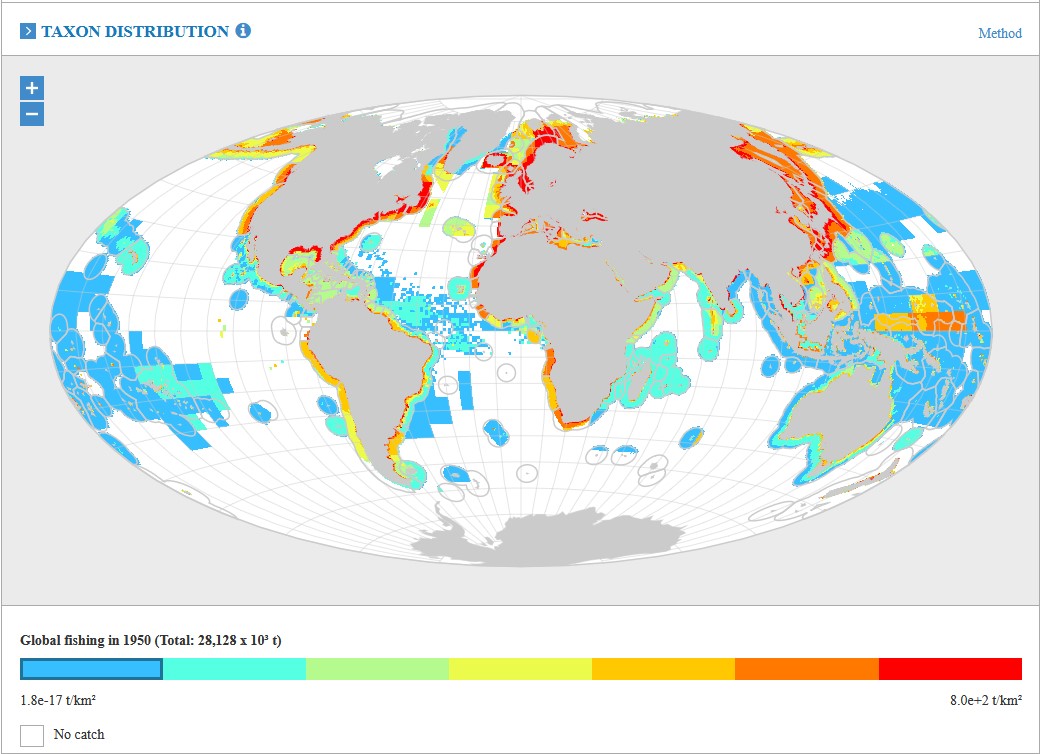 |
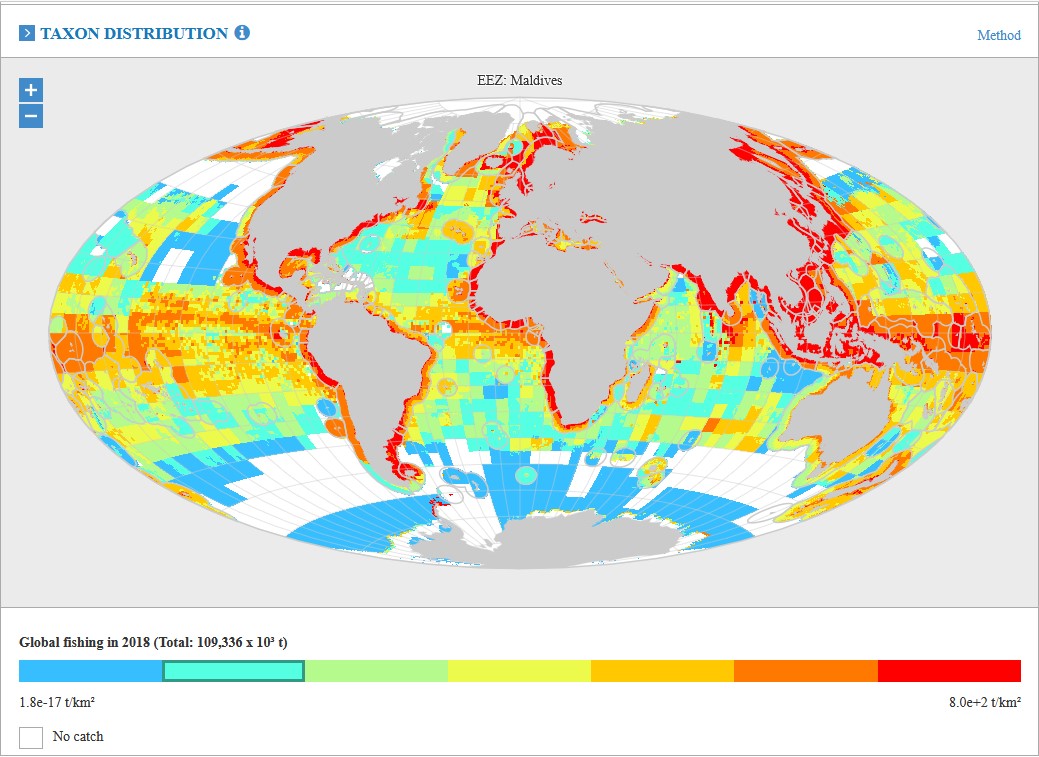 |
So, marine ecosystems are in much poorer state than even many specialists discern. The temperature increase in the upper layers of the ocean due to climate change is exacerbating that sorry state of affairs. What the reader of this review may have by now expected and what Daniel published together with William Cheung9 as lead author, is that fish move polewards to remain within their preferred temperature range and that they will shrink in size, something observable already.
The biography is also testimony to an exceptionally large number of training courses and capacity enhancing activities Daniel invested time and energy into, including supervising droves of MSc and PhD students. That enabled him to build the large and lasting collaborations so important for his ambitious initiatives to drive the development of science-based principles underpinning our understanding of the ocean, its ecosystems and fisheries. Striving for the acceptance of what Daniel Pauly now calls GOLT, ‘Gill-Oxygen Limitation Theory’, drives his efforts in this last phase of an absolutely remarkable scientific career. He banks on its explanatory power for many trends we see in fisheries and aquaculture and in his usual approach is marshalling new evidence to underpin it.
Reading David Grémillet’s well researched biography written with deep empathy and understanding for the scientific and social processes he covers, the reader will dive deeper into the life and work of this enormously prolific and influential scientist who has contributed so immensely to the scientific advances of his field. You will discover many of the companions as well as some adversaries. It’s a book – about the person and scientist – that will not leave you indifferent. Georgia Lyon Froman’s translation does not read as one, but exemplifies what the late Umberto Eco called a negotiation process between two languages and their cultural spheres. With a couple of exceptions she captures the right terms to transport the superb French original into a native anglo-saxon environment. My wish at the end is that it inspires many others to follow in the footsteps and weigh up the short-term interests against the solid scientific evidence. That may help, after all, to become wiser in our investment and management decisions. It should also promote the maximum spread of trustful cooperation we need so desperately to get out of the global crisis mode. This crisis mode puts particularly the weakest members in our societies, who rely most heavily on a healthy ocean, at an additional disadvantage, something Daniel Pauly has seen in practice and extensively commented on in his writings and lecturing. Acting wisely by restoring marine ecosystems would do away with the current waste and allow harvesting more for the many. The NGO community working on social and environmental issues in relation to fisheries and the ocean can find a huge amount of material to underpin their causes. It has a special responsibility to use the science as effectively as possible given that many citizens now trust NGOs more than governments.
Cornelia E Nauen, March 2022
NB the number of siblings erroneously put at five in the original is corrected here to the seven they are, four brothers and three sisters.
1Pauly, D. (2004). Darwin’s fishes. An encyclopedia of ichthyology, ecology and evolution. Cambridge University Press, 340 p.
2Beverton, R.J.H. and Holt, S.J. (1957) On the dynamics of exploited fish populations. Fisheries Investigations, 19:1-533.
3Pauly, D. (1980) On the interrelationship between natural mortality, growth parameters, and mean environmental temperature in 175 fish stocks. ICES Journal of Marine Science, 39(2):175-192.
4Pauly, D. (1979) Gill size and temperature as governing factors in fish growth: A generalization of von Bertalanffy’s growth formula.
5www.fishbase.de / www.fishbase.ca / www.fishbase.org
6Pauly, D. (1995) Anecdotes and the Shifting Baseline Syndrome of Fisheries. Trends in Ecology & Evolution, 10:430.
8Pauly, D. and Zeller, D. (2016) Catch reconstructions reveal that global marine fisheries catches are higher than reported and declining. Nature Communications, 7
9Cheung, W., Sarmiento, J., Dunne, J., Frölicher, T.L., Lam, V.W.Y., Palomares, M.L.D., Watson, R. and Pauly, D. (2013) Shrinking of fishes exacerbates impacts of global ocean changes on marine ecosystems. Nature Climate Change 3:254–258 (2013). https://doi.org/10.1038/nclimate1691








